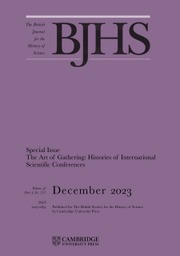This is a remarkable book. It is a superb resource for biologists, philosophers and historians of biology, providing a treasure trove of historical perspectives on the history of biological classification at its highest levels. Numerous gaps in that history are now filled and it becomes possible to understand how and why the big groups that are the book's focus – kingdoms, empires, domains – came into being and have been at least partly vindicated by the relentless molecularization of classificatory practice.
Most historical and philosophical overviews of classification focus on the bottom of the hierarchy, on species and how real they seem to be (and perhaps on how such claims are unjustified). In fact, species have frequently been proclaimed to be the only real level of classification, with no theoretical justification existing for higher levels (genus, family, order, class, phylum, kingdom) and considerable worries for anything below (subspecies, strains and so on). Twentieth-century pundits on systematics such as Ernst Mayr promoted this line of thinking. Perhaps only zoologists continued to cherish the realness of groupings such as phyla due to the existence of what look like body plans. But any reality to these upper levels was anchored firmly in the theoretical justifications for species as the units of evolution. Everything higher was just how species ended up clumping together, even when schemes for the revision of kingdoms were outlined from the 1930s onwards.
In the 1970s, however, a singular event in the history of classification occurred. An upstart biophysicist developed methods of molecular analysis that started at the top of the classification hierarchy. Molecular methods were already in vogue and were transforming evolutionary classification across the tree of life. These methods worked in the usual ways, with species, their connections and how these might be organized in larger groups. But then, in a much more fundamental move, Carl Woese and collaborators found molecular and organismal differences that carved nature at her most basal joints into three domains of life.
Mark Ragan, a bioinformatician and historical sleuth par excellence, has revealed the lead-up to this extraordinary moment, with a gesture toward what has happened since (spoiler: it looks like there are only two domains and that these are the fundamental divisions of life). The book moves chronologically through a series of episodes that piece together key moments in the history of classification, starting with hypothetical musings on the taxonomies that earliest humans might have used and then patchily through antiquity in several cultural systems to conclude that higher-level classification is in fact fairly modern (500 BCE), or at least that it left few traces in the earlier historical record. Once we get to the ancient Greeks, however, the natural world gets carved up in ways that extend far beyond the peak of Hellenistic philosophy into modern times via the Romans and the proliferation of natural histories. Religious world views elaborate on these classification schemata and Ragan takes considerable care in including a range of these perspectives and their contributions, with a focus on how they are connected to the rediscovery of Aristotle's philosophy. We romp through medieval classification philosophies and sweep across alchemy and various ‘magical’ traditions of classification to reach more sober efforts, beginning in the fifteenth century, to classify the two great groups – the kingdoms – of plants and animals. However, as Ragan makes crystal clear, the very term ‘kingdom’ only comes into play in the seventeenth century, and it exclusively concerned the visible life forms being collected and examined by a burgeoning community of natural historians.
At this juncture, Ragan finds a major transition point: not just that kingdoms begin making classificatory sense, but also that microscopes allowed the microscopic world to encroach on the practices and philosophies of classification. Connecting the diverse visible and until-then invisible life forms of the world into a coherent, unifying scheme became pressing. Kingdoms were represented in a variety of arrangements (maps, networks, trees) with the puzzle of ‘infusoria’, or microscopic life, requiring deeper justifications of why life existed as plant or animal (the problematic fungi having been tucked away in plant land). Ernst Haeckel, whose 1904 Kunstformen der Natur illustration of sea anemones (Plate 49) graces the book's cover, tried to clean up confusion with his new kingdom of Protista, the ‘primeval beings’ of life (p. 386), but it faced many empirical and theoretical challenges. Taken up again with a vengeance in the twentieth century, protists and monera (straight from Haeckel) run headlong into molecular phylogeny and the recarving of nature not just from the topmost categories downward but from the humble basis of the smallest life forms on Earth.
Why did this book have to be written? What does it contribute apart from vast amounts of information in its 830 beautifully presented pages (449 of narrative text)? Ragan mentions various social and political factors that might have shaped institutional and national classificatory attempts, but these are not a focus of the book, and nor could they be in an opus so encompassing. As well as the textual details of who said what and when (and sometimes why), Ragan pays careful attention to the deeper philosophies of these classification schemes. It is curious that the culmination of this history, contemporary classification practice, gets fairly short shrift, and likewise its accompanying philosophical revolutions and ruptures. But this is an astute move because rather than a teleological history we get a book that does justice to Ragan's fascination for and familiarity with a vast array of literature on higher-level classification. Each episode or era of classification is a compressed but scholarly account of major figures, texts and ideas about classification that – rather than rolling inevitably to the right ending – shows the diversity of views, the problems (some still unsolved) and the uncertainties of classification still present in the field today. The book is an extraordinary resource for anyone even slightly interested in the history of classification.



